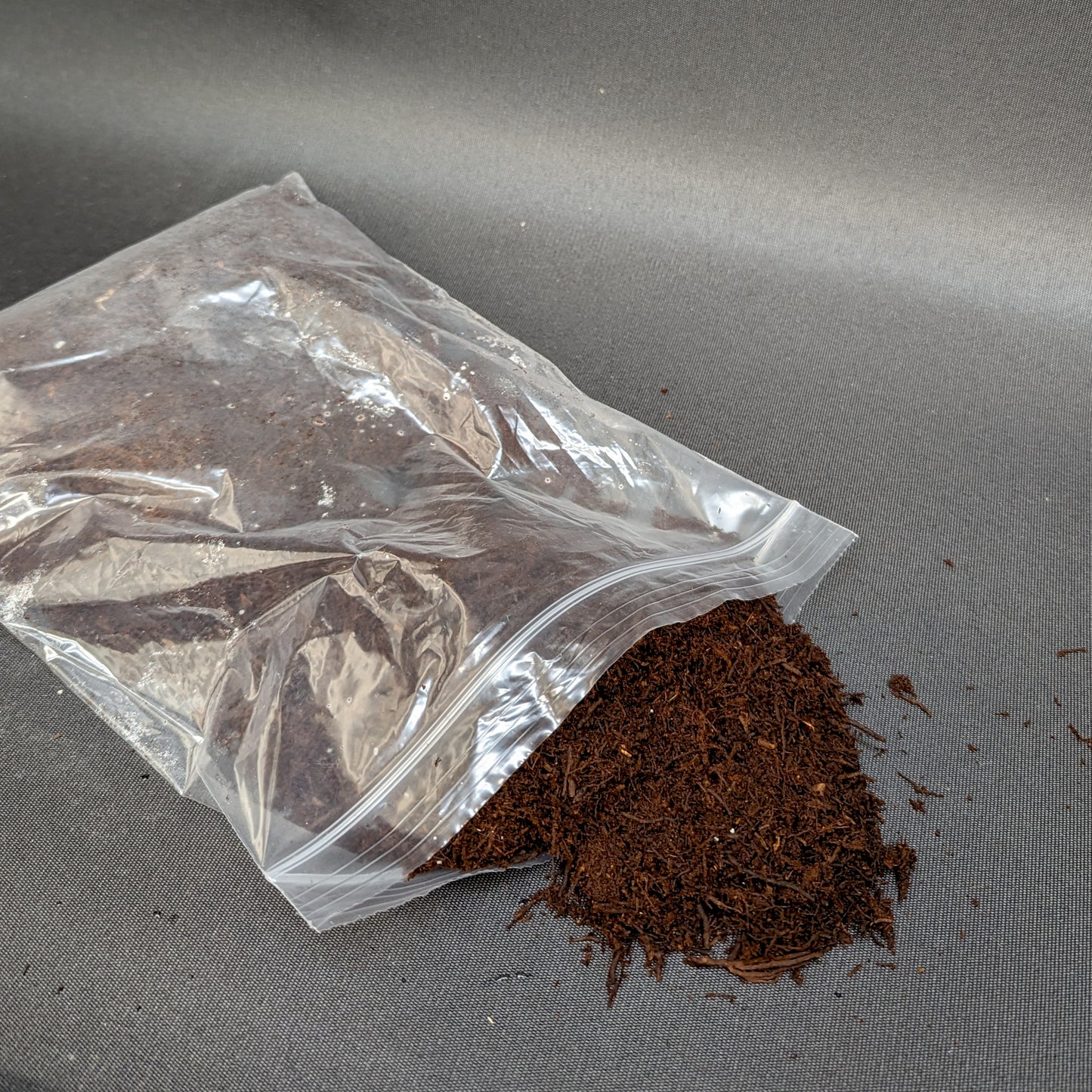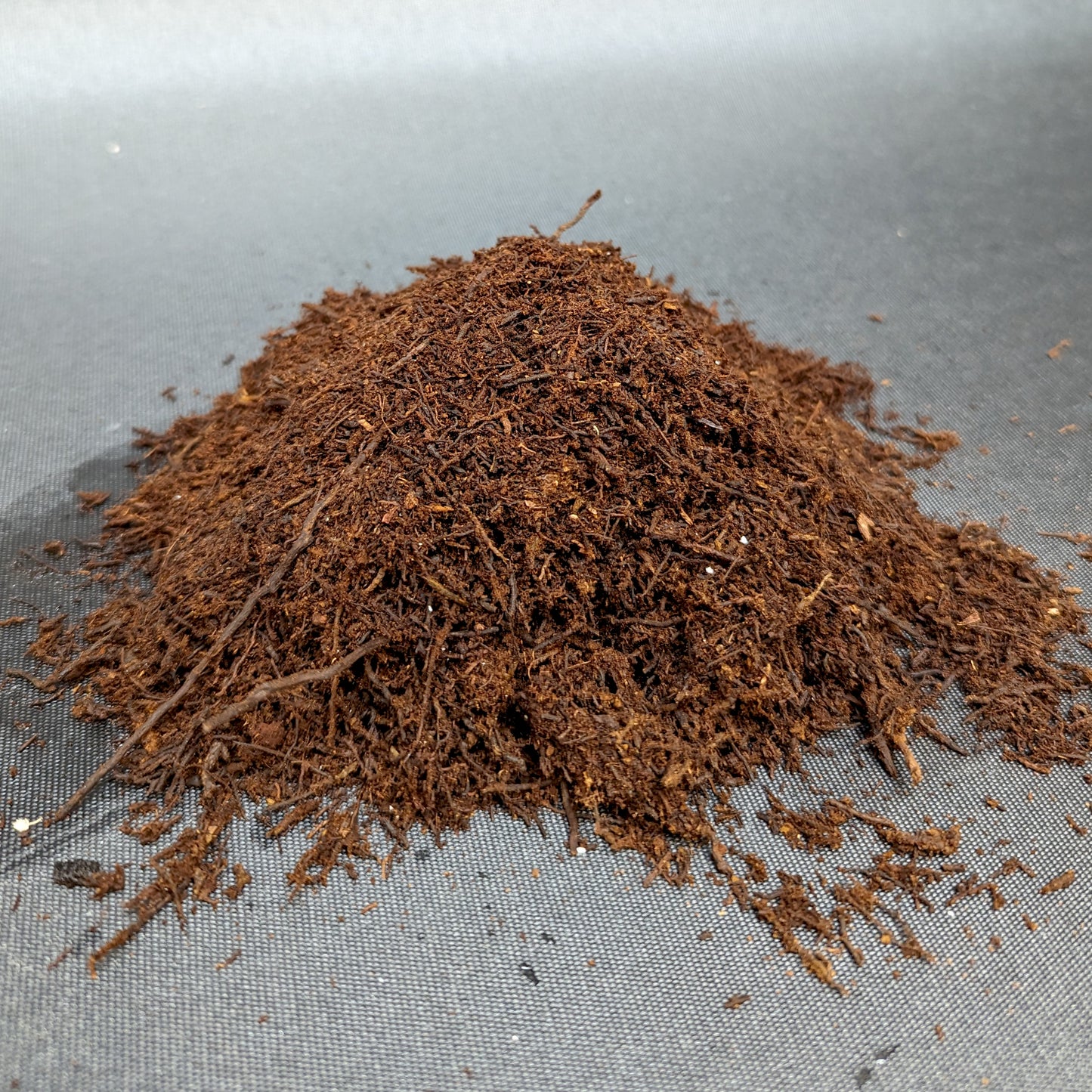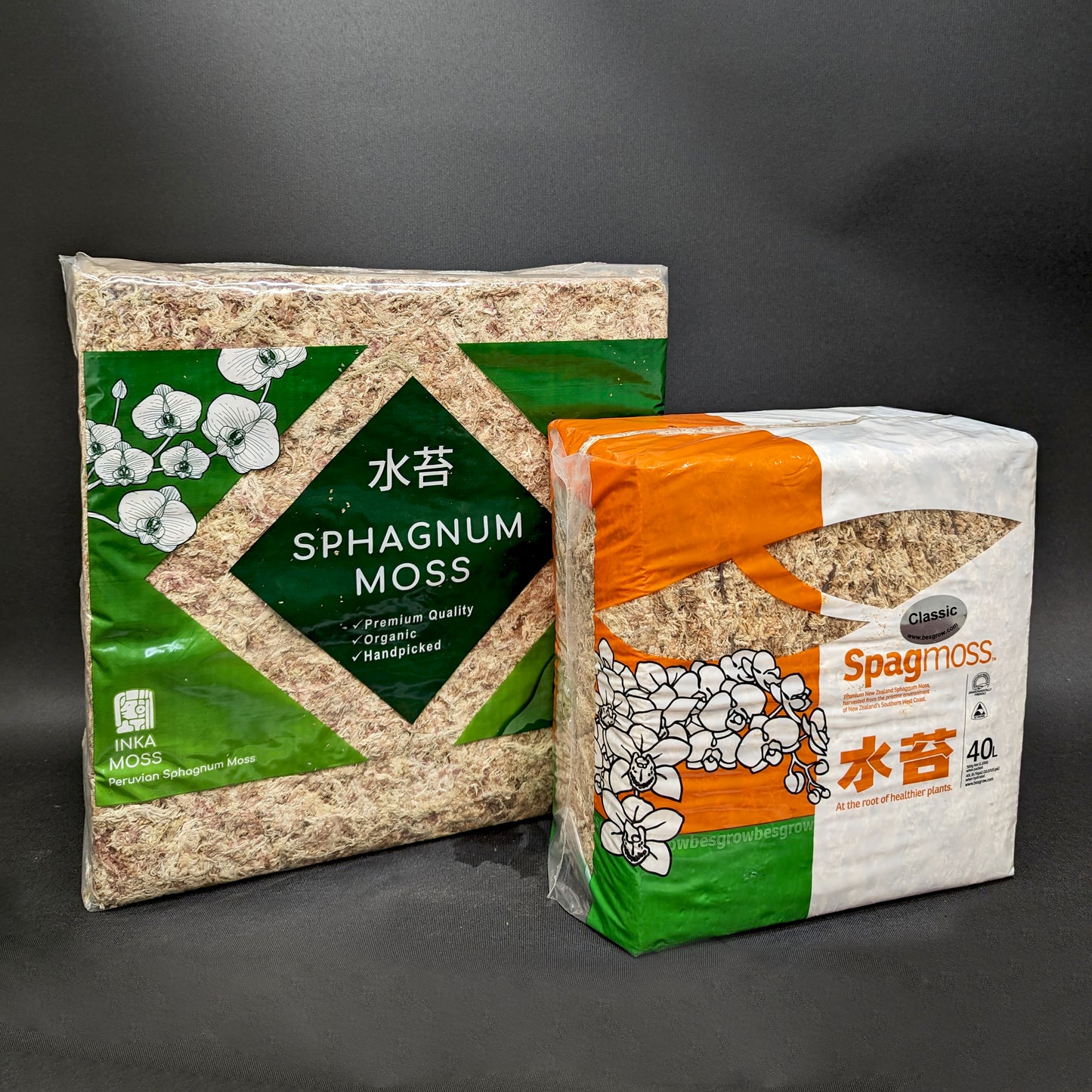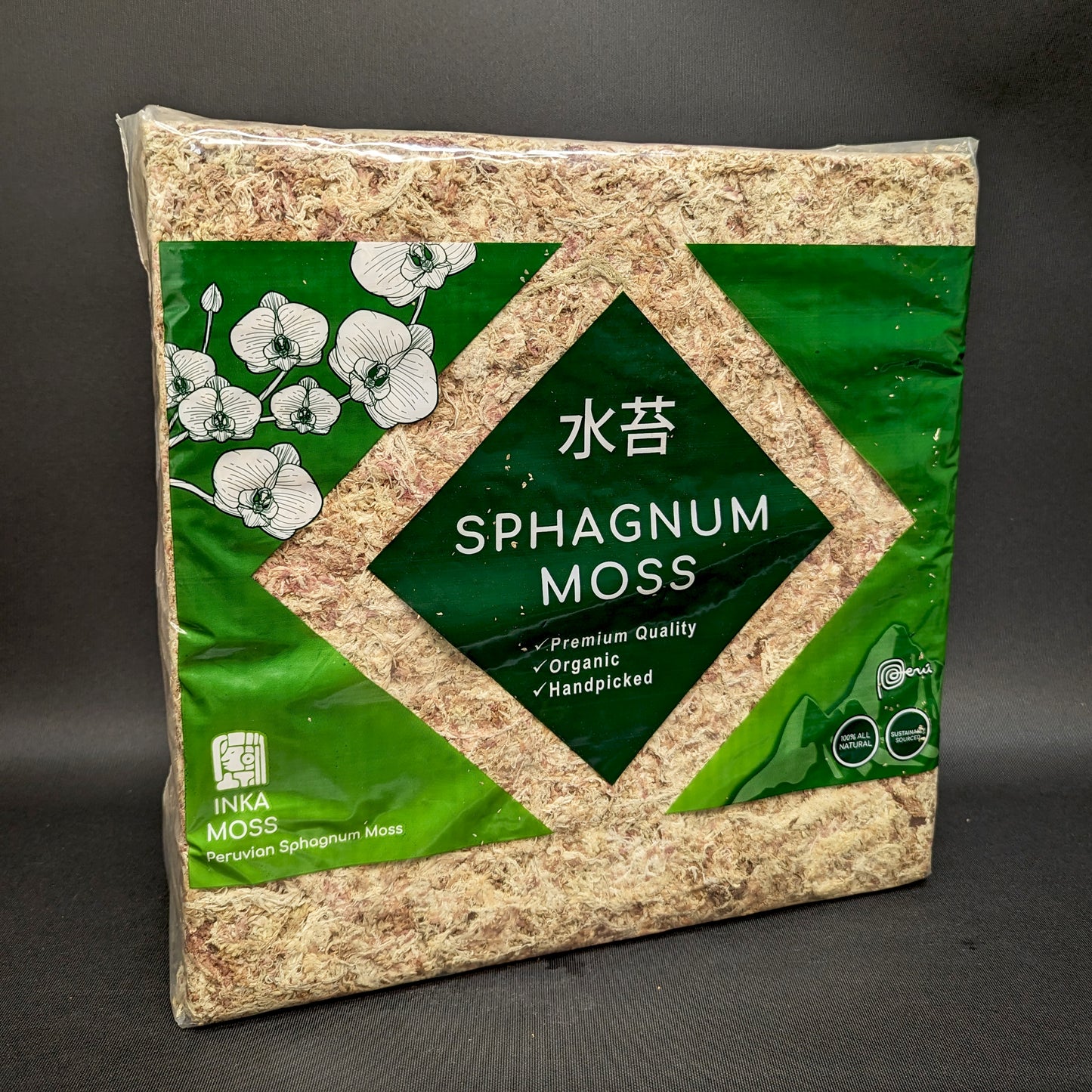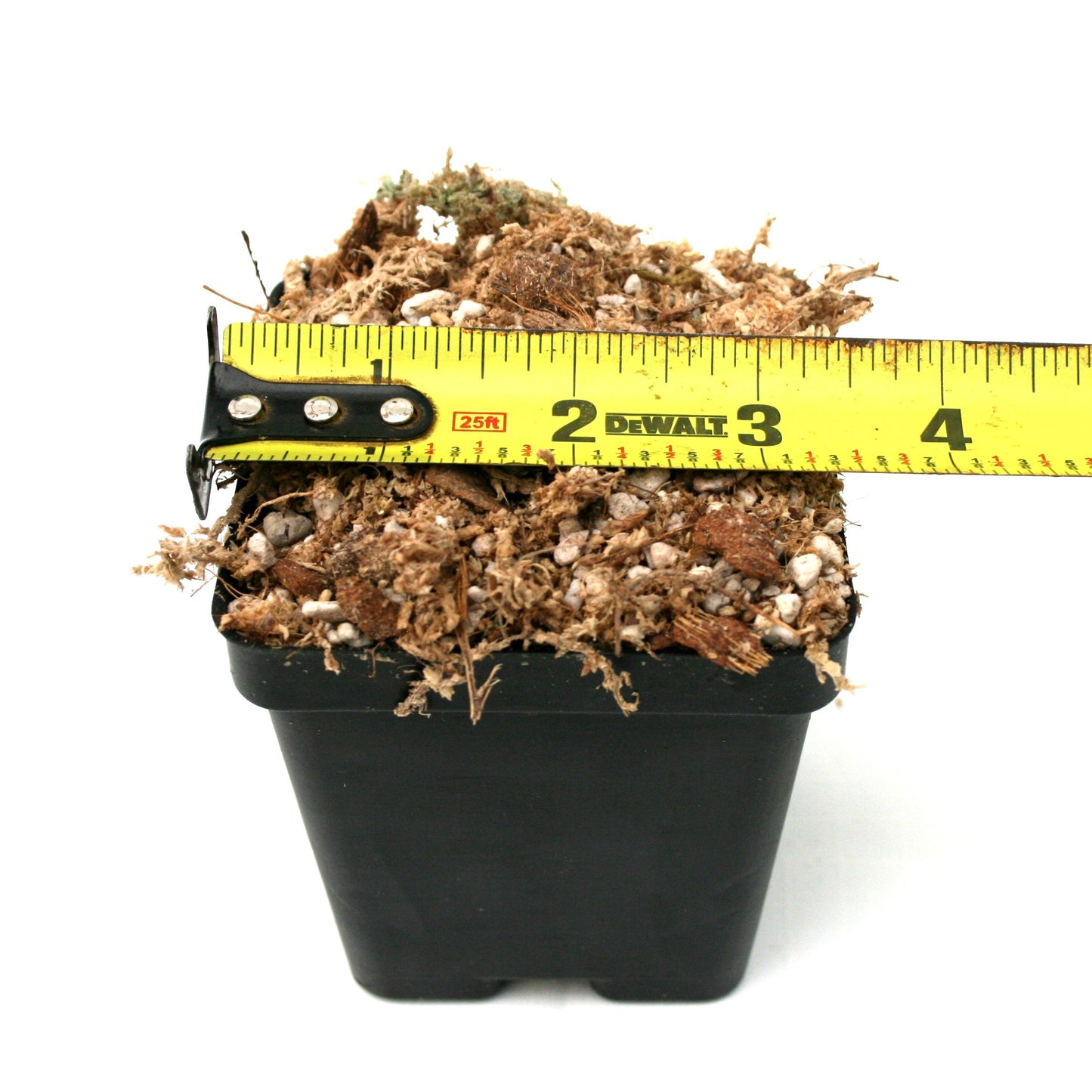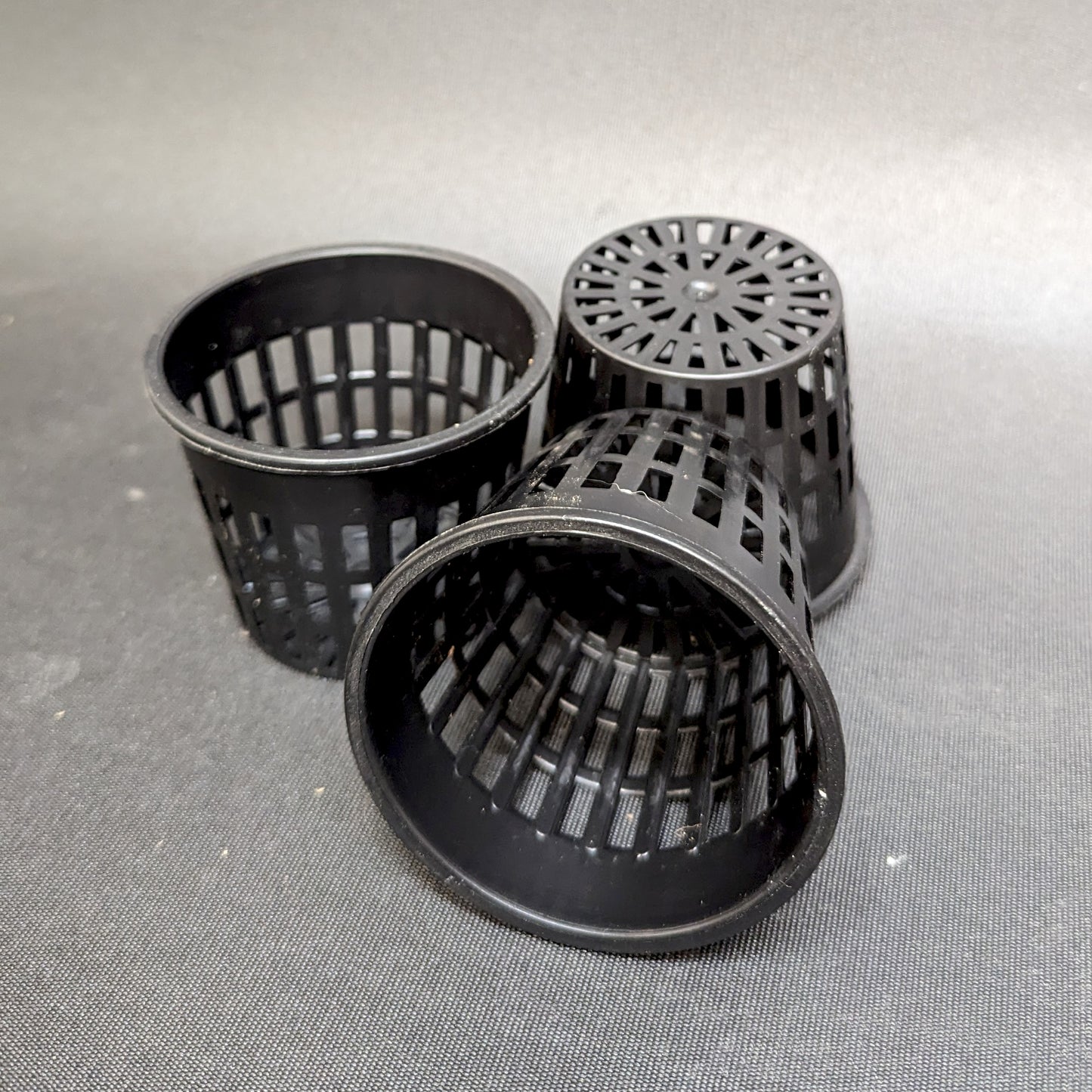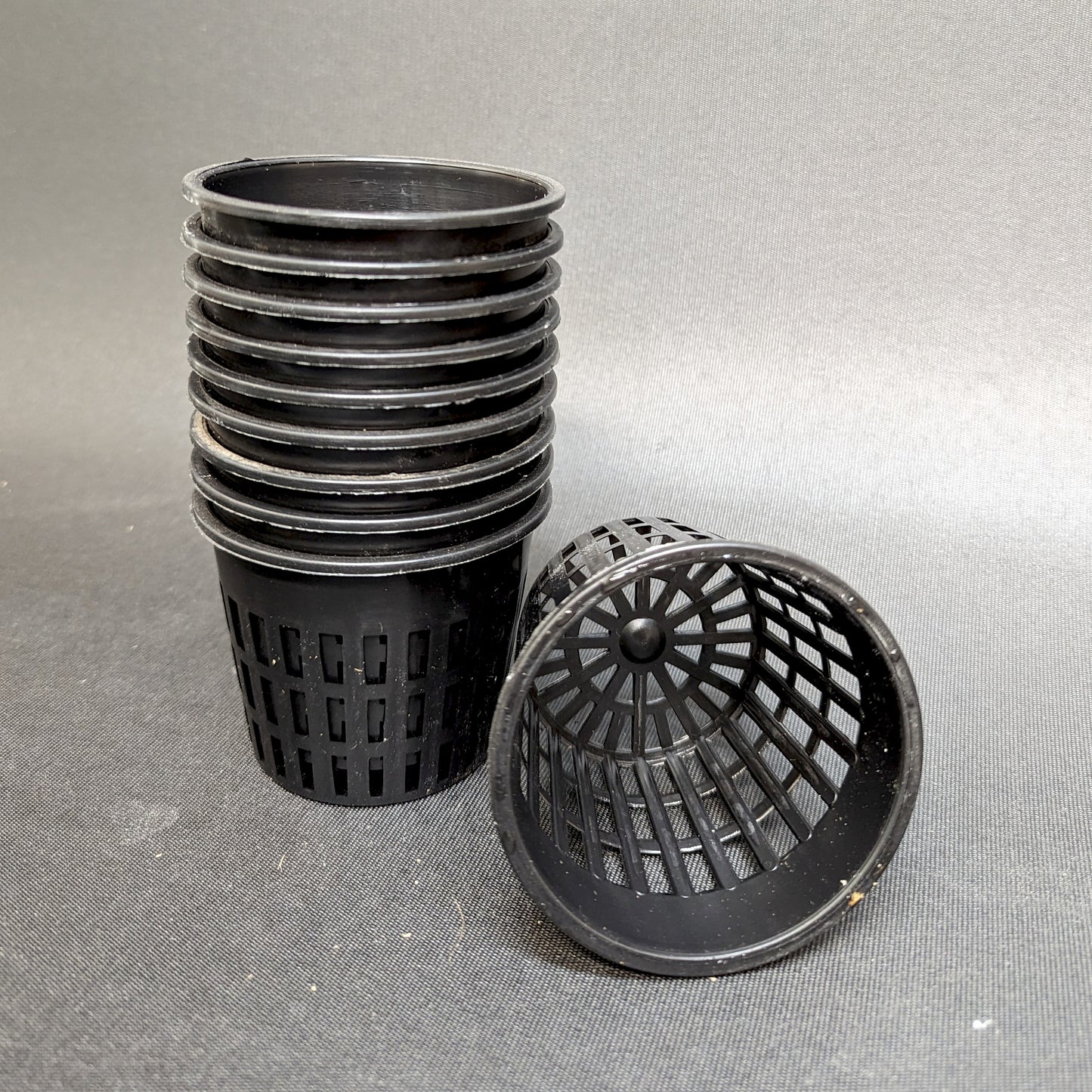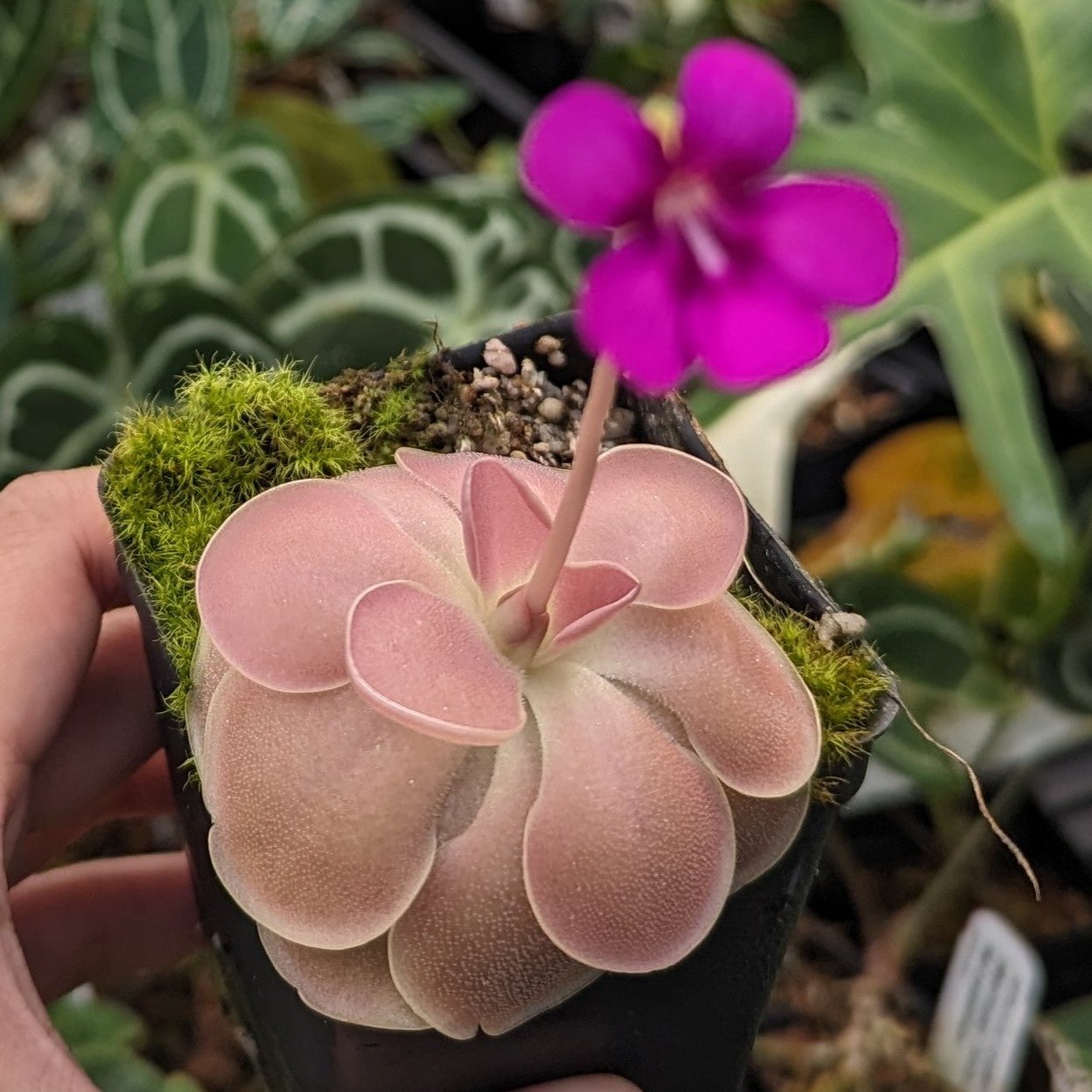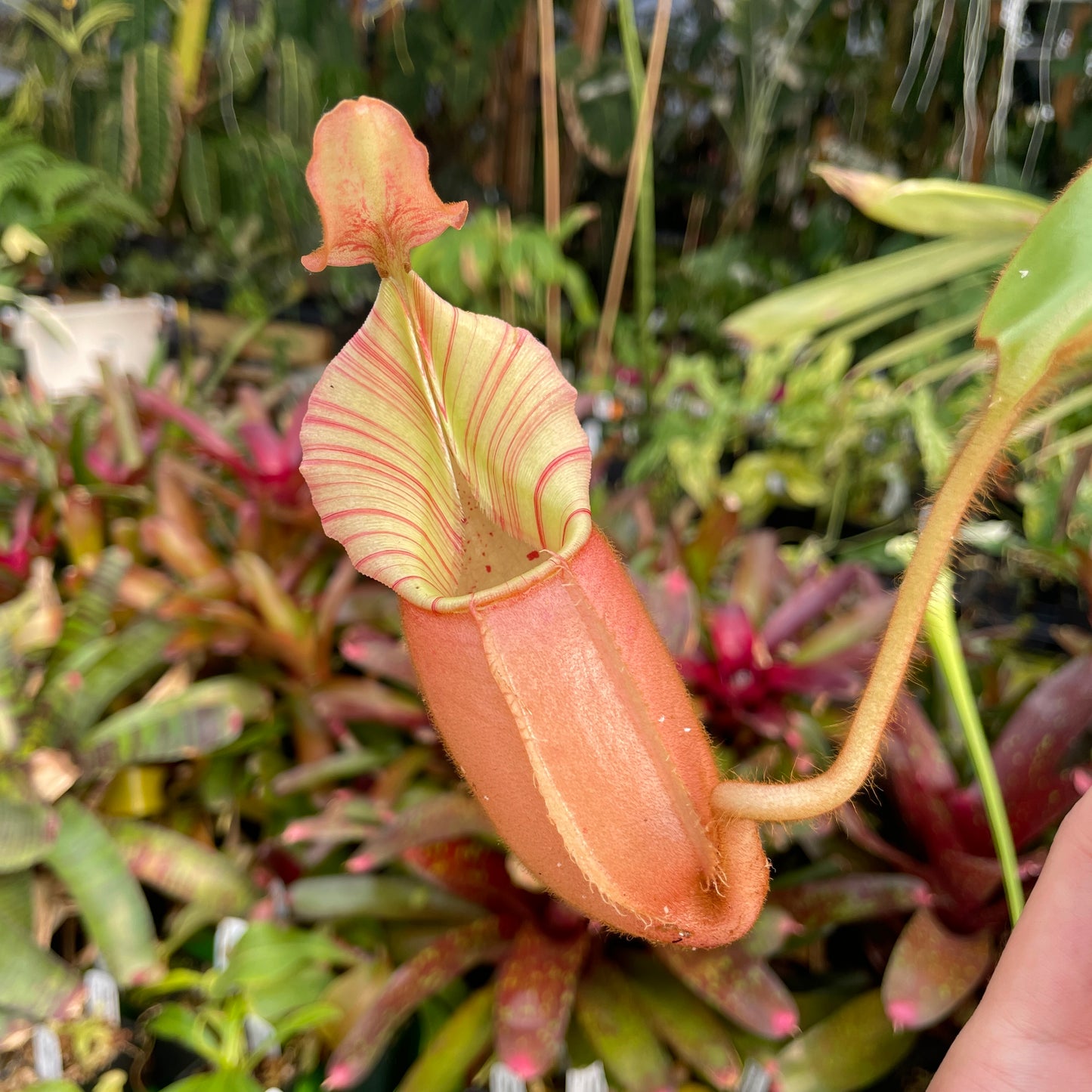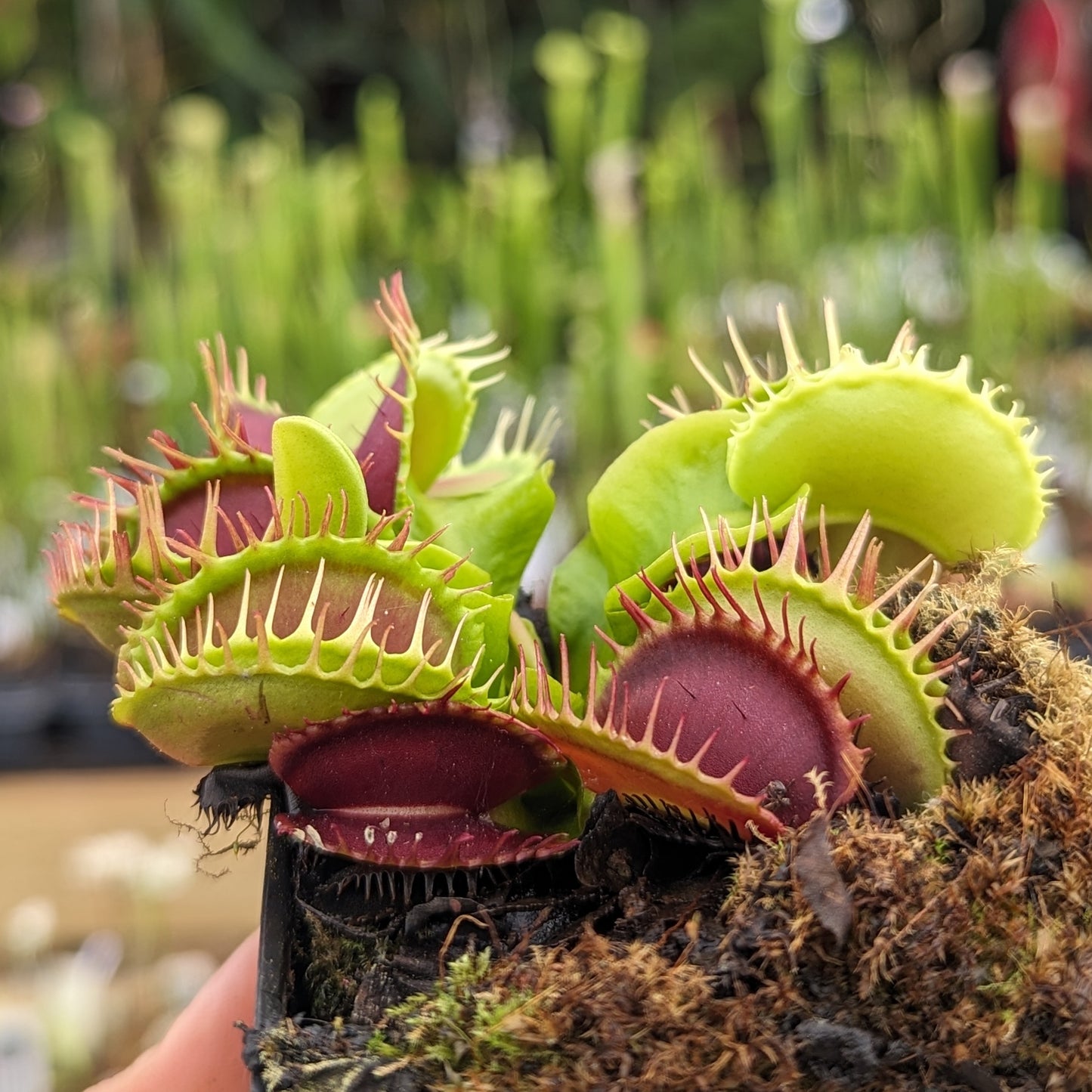[A482] Nepenthes villosa (Mt. Kinabalu, Borneo) - Clone JG01
Learn more about Carnivero Auctions on our FAQ page.
Nepenthes villosa may be the most bizzarrely beautiful plant in the world. It grows only in the upper montane forests of a few ultramaffic regions in Kinabalu National Park where it produces large amounts of pitchers as it scrambles across the dwarfed brush just below the treeline.
It can be challenging to give Nepenthes villosa the conditions it wants to thrive but if you are able to do so then the species itself is not too finicky. Don't be misled by growers who try to convince you this plant can be grown as anything other than a strict highland plant. It can survive for a few months in non-ideal conditions; however, if a young plant starts going downhill it may be very difficult to get it to recover. Ideally, villosa wants nights in the low to mid 50's and days in the 70's with high humidity. Villosa is prone to crown rot especially when young so the leaves must be kept dry. The soil mix is not crucial (we use our typical Nepenthes mix) but make sure it has good drainage or the roots may suffer. In villosa's natural habitat (around 2600-3200 meters elevation) nights often can drop to just above freezing. Villosa prefers average light to slightly higher light than most Nepenthes. We've found that it produces its best pitchers in the spring (fingers crossed we get a flower soon since our biggest plant is now vining). Once established, villosa is a steady grower and will produce a few long lasting pitchers per year.
All plants have a live arrival guaranteed. More information here.
All plants have a live arrival guaranteed. More information here.
[A482] Nepenthes villosa (Mt. Kinabalu, Borneo) - Clone JG01
Learn more about Carnivero Auctions on our FAQ page.
Nepenthes villosa may be the most bizzarrely beautiful plant in the world. It grows only in the upper montane forests of a few ultramaffic regions in Kinabalu National Park where it produces large amounts of pitchers as it scrambles across the dwarfed brush just below the treeline.
It can be challenging to give Nepenthes villosa the conditions it wants to thrive but if you are able to do so then the species itself is not too finicky. Don't be misled by growers who try to convince you this plant can be grown as anything other than a strict highland plant. It can survive for a few months in non-ideal conditions; however, if a young plant starts going downhill it may be very difficult to get it to recover. Ideally, villosa wants nights in the low to mid 50's and days in the 70's with high humidity. Villosa is prone to crown rot especially when young so the leaves must be kept dry. The soil mix is not crucial (we use our typical Nepenthes mix) but make sure it has good drainage or the roots may suffer. In villosa's natural habitat (around 2600-3200 meters elevation) nights often can drop to just above freezing. Villosa prefers average light to slightly higher light than most Nepenthes. We've found that it produces its best pitchers in the spring (fingers crossed we get a flower soon since our biggest plant is now vining). Once established, villosa is a steady grower and will produce a few long lasting pitchers per year.
All plants have a live arrival guaranteed. More information here.
All plants have a live arrival guaranteed. More information here.

![[A482] Nepenthes villosa (Mt. Kinabalu, Borneo) - Clone JG01](http://www.carnivero.com/cdn/shop/files/IMG_2045.jpg?v=1731085969&width=1445)
![[A482] Nepenthes villosa (Mt. Kinabalu, Borneo) - Clone JG01](http://www.carnivero.com/cdn/shop/files/IMG_2044.jpg?v=1731085969&width=1445)
![[A482] Nepenthes villosa (Mt. Kinabalu, Borneo) - Clone JG01](http://www.carnivero.com/cdn/shop/files/IMG_2043.jpg?v=1731085969&width=1445)







